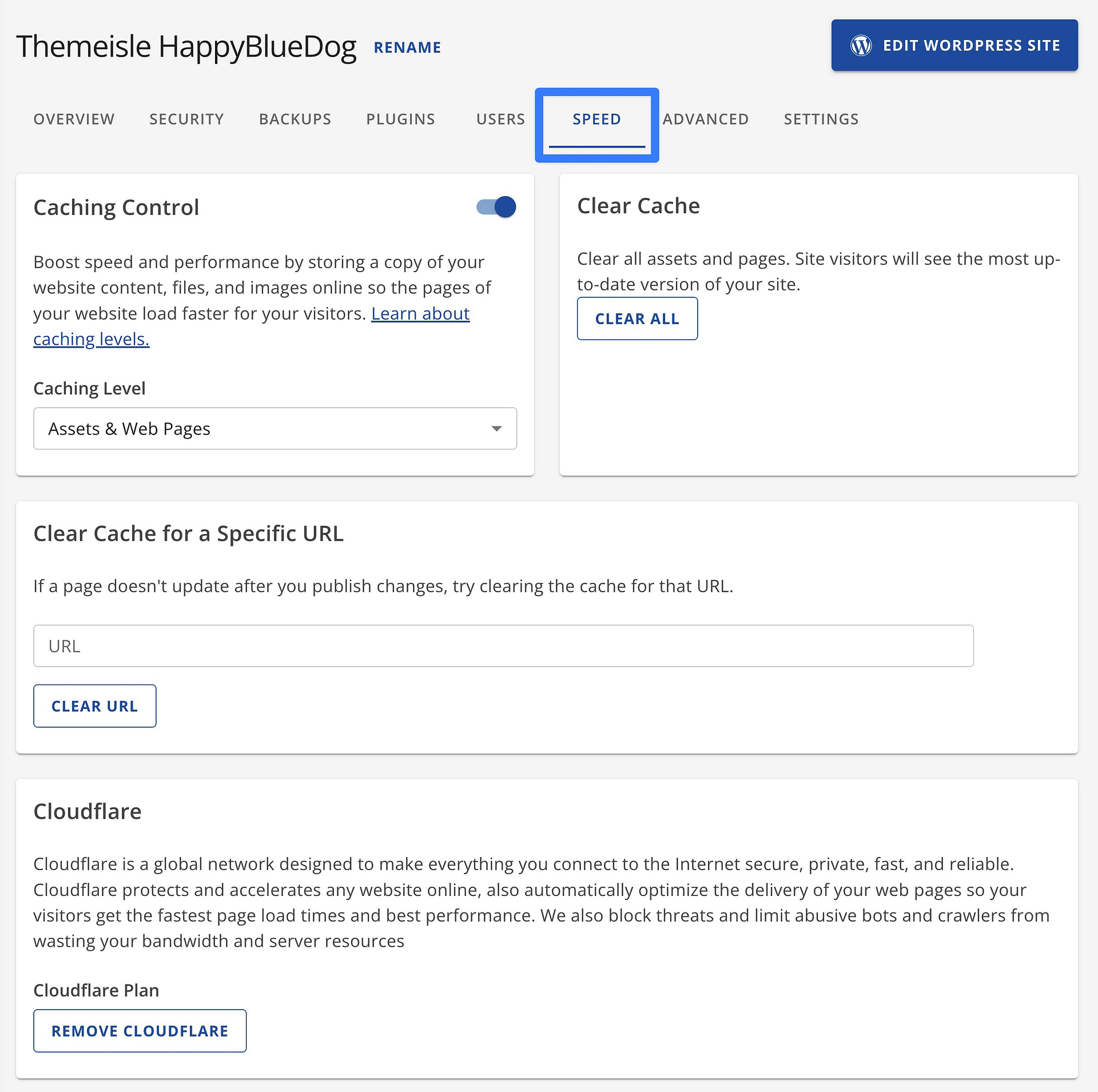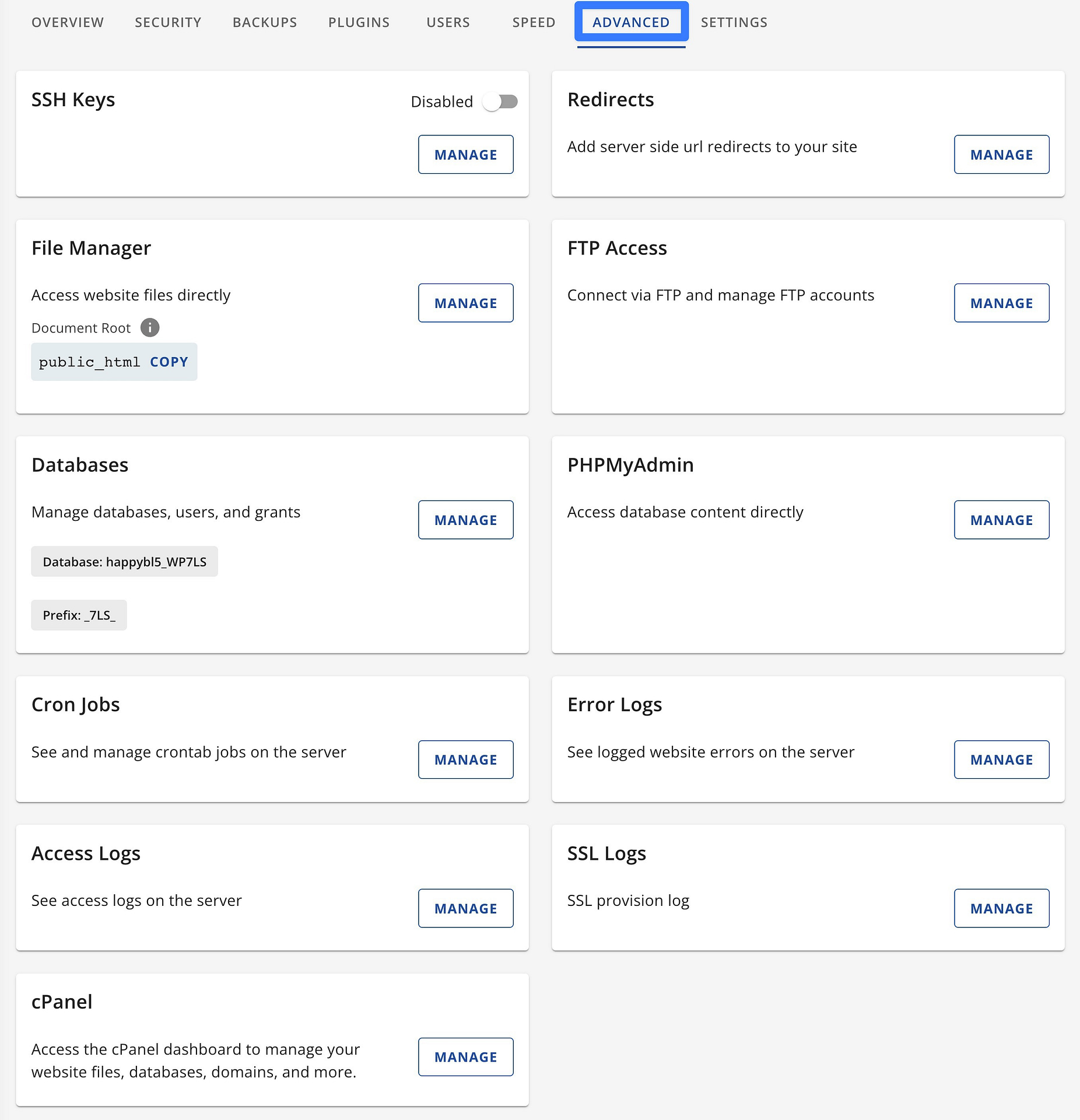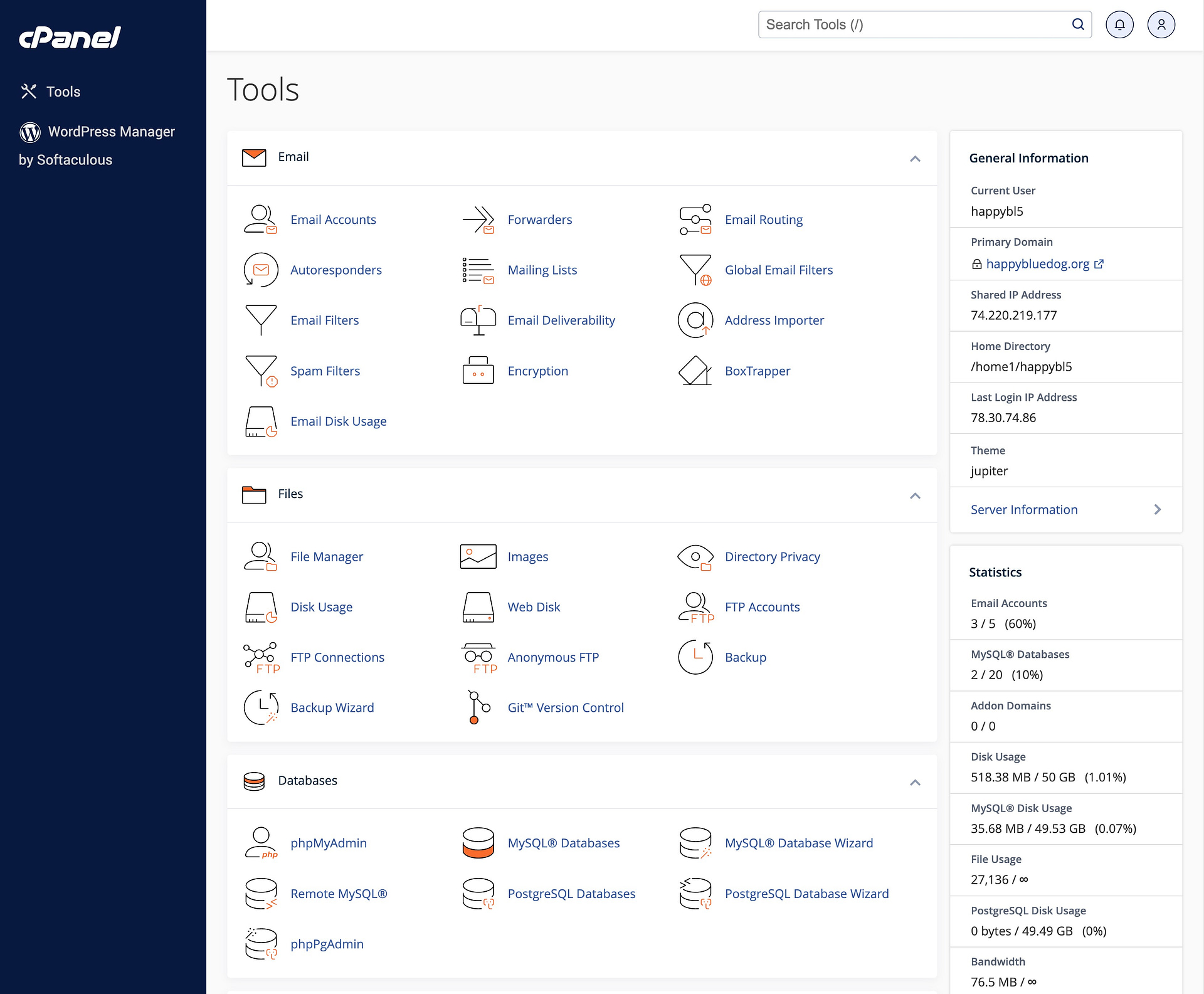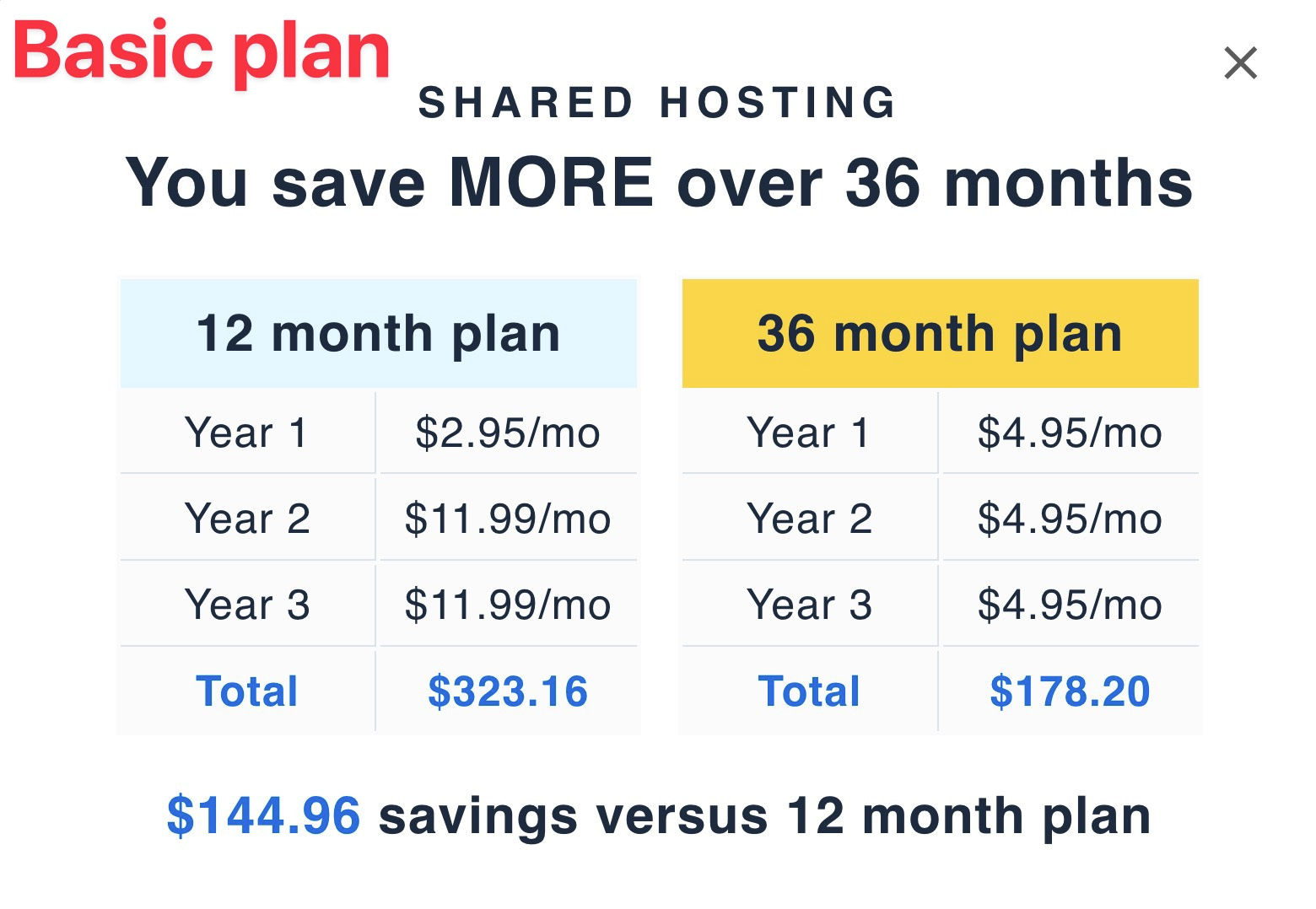In this hands-on Bluehost review, we’ll help you decide if Bluehost is the best host for your websites.
In general, Bluehost can be a good option for non-technical users who are looking for a simple way to make a website. Bluehost offers a very beginner-friendly dashboard and setup process, which makes it easy for you to launch your own WordPress site. It’s also quite affordable, which is great if you’re on a budget.
However, for serious websites where your goal is to make money, you might be better off choosing a more performance-focused (and often slightly more expensive) web host. For example, we use Rocket.net here at Themeisle, and I’ve also moved to using Rocket.net for my own personal websites. Our Rocket.net review explains why.
👉 In our full Bluehost review, I’ll help you understand where those conclusions come from by taking a look at key areas:
A quick look at key features ⚙️
You can find all of Bluehost’s features in the Bluehost marketing copy, so I won’t spend too long here.
However, I think it is useful to start with a quick rundown of the key features so that you know exactly what’s on offer.
- WordPress setup/onboarding tool – you can create your site with a very simple setup wizard/WordPress install tool.
- Custom hosting dashboard – you can easily manage your sites via the user-friendly dashboard.
- cPanel – in addition to the custom dashboard, you can also still access cPanel for more advanced functions.
- Multiple websites – you can host from one to five websites, depending on the plan (Bluehost no longer supports unlimited websites).
- SSD storage – you get from ten up to 100 GB of SSD storage, depending on the plan (Bluehost no longer offers unlimited storage).
- Backups – Bluehost offers an automatic backup tool called CodeGuard (but it costs extra).
- Server-level caching – this can improve your site’s performance and eliminate the need to use a separate caching plugin.
- Free SSL certificates – these help you secure your site’s data at no extra cost.
- Staging sites – you can easily set up staging sites to safely test changes/updates to your site.
- Free email hosting – you can create a custom email address (e.g., [email protected]) for free.
- Malware scanning – you can access malware scanning and other security features via SiteLock (but it costs extra).
- Free WooCommerce plugins (Online Plan) – if you choose the Online Store plan, you’ll get access to hundreds of dollars worth of WooCommerce extensions at no extra cost (most of them come from YITH).
Bluehost review of user experience and setup process 🖱️
As I mentioned in the introduction, I think that user experience and beginner friendliness are some of Bluehost’s strongest points.
Given that, let’s start the hands-on section of our Bluehost review with a look at a few key areas…
WordPress installation/site setup process
If you’ve never built a WordPress site before, it can feel a little intimidating to set everything up.
Thankfully, Bluehost makes this super easy. 🤩
When you go to add a site, it launches a simple setup wizard to take you through the process.
We detail this entire setup process in our guide on how to install WordPress on Bluehost.
Custom hosting dashboard
To help you manage your WordPress sites, Bluehost offers a custom hosting dashboard for each site.
Across the top, you can quickly access key areas such as security, backups, plugins, users (on your WordPress site), speed, and other settings.
For example, in the Speed tab, you can manage the server-level caching that Bluehost implements to improve performance, as well as the Cloudflare integration.


The Advanced tab includes some helpful tools, such as a redirect manager.


cPanel access
While Bluehost does offer its own custom dashboard experience, you still get full access to cPanel and all of the tools that cPanel offers, including File Manager, phpMyAdmin, backups (in addition to Bluehost’s CodeGuard backup solution), and lots more.
If you’re not familiar with what cPanel is, it basically gives you a bunch of tools to manage your hosting/websites without needing special technical knowledge.
You can access cPanel by selecting the Manage option next to cPanel in the Advanced tab.


Overall, the Bluehost dashboard experience is quite user-friendly and beginner-friendly (especially when considering it’s a budget host), which I think is one of its advantages.
Bluehost review of performance and speed 📈
As your site’s foundation, your hosting will play an important role in how quickly your website loads. Having a quick-loading website is important for creating a good experience for your users (which will also affect other areas like search engine optimization, revenue, conversion rates, and more).
Performance is especially important if you want to make money from your website, as site speed can directly affect your site’s revenue.
To collect accurate performance data for our Bluehost review, we set up a real website that we continuously monitor for speed and uptime.
Here are the results from our most recent tests:
| East Coast, USA: 1.35s | West Coast, USA: 1.10s |
| London: 0.59s ⭐ | Paris: 1.50s |
| Mumbai, India: 0.64s ⭐ | Sydney: 1.29s |
And then here is our most recent Bluehost uptime data:
| September 2023 | October 2023 | November 2023 |
|---|---|---|
| 100% ⭐ | 100% ⭐ | 100% ⭐ |
In general, Bluehost can offer adequate performance for low-traffic sites. For example, portfolio websites, brochure websites, or small blogs.
However, for higher-traffic sites (e.g., a high-traffic blog) or sites with more intense resource usage (e.g., busy WooCommerce stores or membership websites), you might want to consider more performance-focused WordPress hosting.
Good options here include Rocket.net (which is what we use here at Themeisle), Kinsta, and WP Engine.
These hosts all do cost more than Bluehost, which is the downside. But the upside is that they can offer better performance, especially in high-traffic situations (which is when Bluehost’s shared plans can start to slow down).
Support options 🧑💻
Bluehost offers 24/7 support for all plans.
👉 You can get support via three different channels:
- Live chat
- Phone
- Ticket/email
Having access to phone support is a nice benefit, as a lot of similarly priced hosts have moved to only offering support via live chat.
In terms of support quality, Bluehost is okay. Support staff are generally friendly and happy to help you solve problems.
For more complex problems, you might need to have your issue escalated to someone higher up the chain. While this can be a little frustrating, this approach is pretty much universal when it comes to hosts in this price range, so it’s hard to fault Bluehost there.
If you want to get support from the expert-level customer support staff right away, you can find hosts that do that…but they’ll cost a lot more.
For example, Pressidium doesn’t have support tiers and has DevOps engineers handle every support request. While that’s nice to have, Pressidium could easily have you paying $100+ per month to host the same site that you can host for under $10 on Bluehost.
Speaking of pricing, let’s cover that next…
Bluehost pricing 💳
One big advantage of Bluehost’s shared hosting plans is their low cost, which can make them an attractive option if you’re on a tight budget.
Bluehost’s Basic plan starts at just $2.75 per month, while the Choice Plus plan starts at $4.95.
However, I think it’s important to point out that these are the promotional prices. This means that the discounted price only applies to your first billing cycle. After that, you’ll need to pay the regular price.
Currently, you can pay for a year up front, which means that you can lock in the best promotional price for a full year. When your plan renews after the first year, you will then need to pay the regular price (more on this below).
You also have the option to pay for a full three years upfront, which lets you lock in a discounted price for the full three years. However, the discounted prices aren’t quite as low if you do this. For example, the Basic plan costs $4.95 per month, and the Choice Plus plan costs $7.45 per month when you pay for three years in advance.
While the monthly rate is a little higher, the advantage is that you get to lock in a discounted price for longer. If you’re in it for the long haul, it might make sense to pay for three years.


Here’s a full breakdown of the monthly price for different billing durations for both promotional and regular pricing.
⚠️ Note – when you first sign up, you can only choose between 12 months and 36 months. However, at renewal, you have more options for different billing terms.
| Basic | Choice Plus | |
| 12 months (promo) | $2.95 | $5.45 |
| 12 months (regular) | $10.99 | $19.99 |
| 36 months (promo) | $4.95 | $7.45 |
| 36 months (regular) | $9.99 | $19.99 |
| 1 month (regular only)* | $14.99 | $24.99 |
| 3 months (regular only)* | $13.99 | $23.99 |
| 6 months (regular only)* | $12.99 | $22.99 |
| 24 months (regular only)* | $9.99 | $18.99 |
*Only available at renewal.
👉 For more details, check out our full Bluehost review of pricing options.
Other Bluehost add-ons and pricing details
Beyond pricing for the plans themselves, there are also a few other pricing considerations at Bluehost.
First off, you do get a free domain name for the first year. However, after the first year, you’ll need to pay for both your domain name and domain privacy (which costs $15 per year).
Given that a lot of domain registrars offer free domain privacy, this is a bit of a bummer.
If you’re not a very technical person, I recommend still getting your domain through Bluehost – it’s free for the first year, and the prices are still okay after that.
However, if you feel comfortable with manually pointing your domain name to your hosting, I recommend purchasing your domain name separately via a quality domain registrar like Cloudflare Registrar or Namecheap.
👉 Beyond that, Bluehost also charges extra for some add-ons that other hosts offer for free:
- CodeGuard automatic backups – this is free for the first year on the Choice Plus plan and above. After that, it starts at $3.99 per month per domain.
- SiteLock Essentials (security) – from $35.88 per year.
- Premium SSL certificate – you do not need this because you already get free SSL certificates from Let’s Encrypt as part of the core hosting plan. Don’t purchase it.
You also get some benefits, though. For example, because Yoast SEO and Bluehost are now owned by the same parent company, you can access the extra features in Yoast SEO Premium for just $23.88 per year. Normally, it would cost you $99 if you purchased it separately.
Bluehost review: Pros and cons 👍👎
To finish out our Bluehost review, let’s recap some pros and cons…
Pros
Bluehost is very beginner-friendly when it comes to setting up and managing your sites, which can make it a good option for non-technical users.
You can manage your sites with both a user-friendly custom dashboard and cPanel, which offers something for everyone.
Bluehost’s performance can be adequate for small sites, which can work well for portfolio websites or brochure websites.
You can get support via a variety of channels, including over the phone (which many hosts don’t offer nowadays).
Bluehost is affordable, especially if you lock in the promotional prices for three years. This can make it good for people on a budget.
Cons
There’s a big jump between the promotional prices (what you pay for your first billing term) and the regular prices. While Bluehost is still affordable at the regular price, you’ll want to make sure that you factor both prices into your decisions.
While Bluehost’s performance is adequate for small sites, higher-traffic sites and/or more money-focused sites should probably invest in more performance-focused hosting like Rocket.net or Kinsta.
Bluehost no longer offers unlimited website hosting or unlimited storage (as of November 1, 2023). Many other similarly priced shared hosts do still offer unlimited hosting.
Should you use Bluehost? Final thoughts on our Bluehost review 🤔
Overall, Bluehost can be a good option for some people, but not for everyone.
Let’s go through when you should consider Bluehost, as well as when to consider a different host.
When to use Bluehost
Where Bluehost does well is when it comes to offering a beginner-friendly and affordable way to launch your own WordPress website (or other types of websites).
If you’re a beginner and you feel overwhelmed by creating a website, Bluehost will help you easily get up and running with a working site at a price that won’t blow out your bank account.
If you’re ready to get started, you can go to Bluehost and then follow our guide on how to install WordPress on Bluehost.
When to use a different host
For serious websites with higher traffic levels and where your goal is to make money, I think that it makes sense to invest a little more in more performant hosting.
In that case, a host like Rocket.net makes a great option. With plans starting at $30 per month, it does cost a bit more than Bluehost. But it backs up that price with excellent performance and a solid all-around feature set. That’s why we use Rocket.net here at Themeisle and why I also use it on my own personal websites.
If you want to learn more, you can go to Rocket.net or read our hands-on Rocket.net review.
Additionally, the fact that Bluehost no longer offers support for unlimited websites and storage means it’s probably not the best option if you want to host lots of low-traffic sites. Check out our roundup of the best unlimited web hosts to find some good options – I think that InMotion Hosting, A2 Hosting, and DreamHost are all solid options.
Do you still have any questions about Bluehost or our Bluehost review? Let us know in the comments!
Pros
Beginner-friendly WordPress setup process
Performance is solid for lower-traffic sites
User-friendly custom dashboard (plus cPanel access)
Cons
No more unlimited websites and storage
Performance can slow down in high-traffic situations
Free guide
4 Essential Steps to Speed Up
Your WordPress Website
Follow the simple steps in our 4-part mini series
and reduce your loading times by 50-80%. 🚀
Was this article helpful?
No
Thanks for your feedback!
Keep reading the article at Themeisle Blog. The article was originally written by Colin on 2023-12-11 08:30:00.
The article was hand-picked and curated for you by the Editorial Team of WP Archives.

